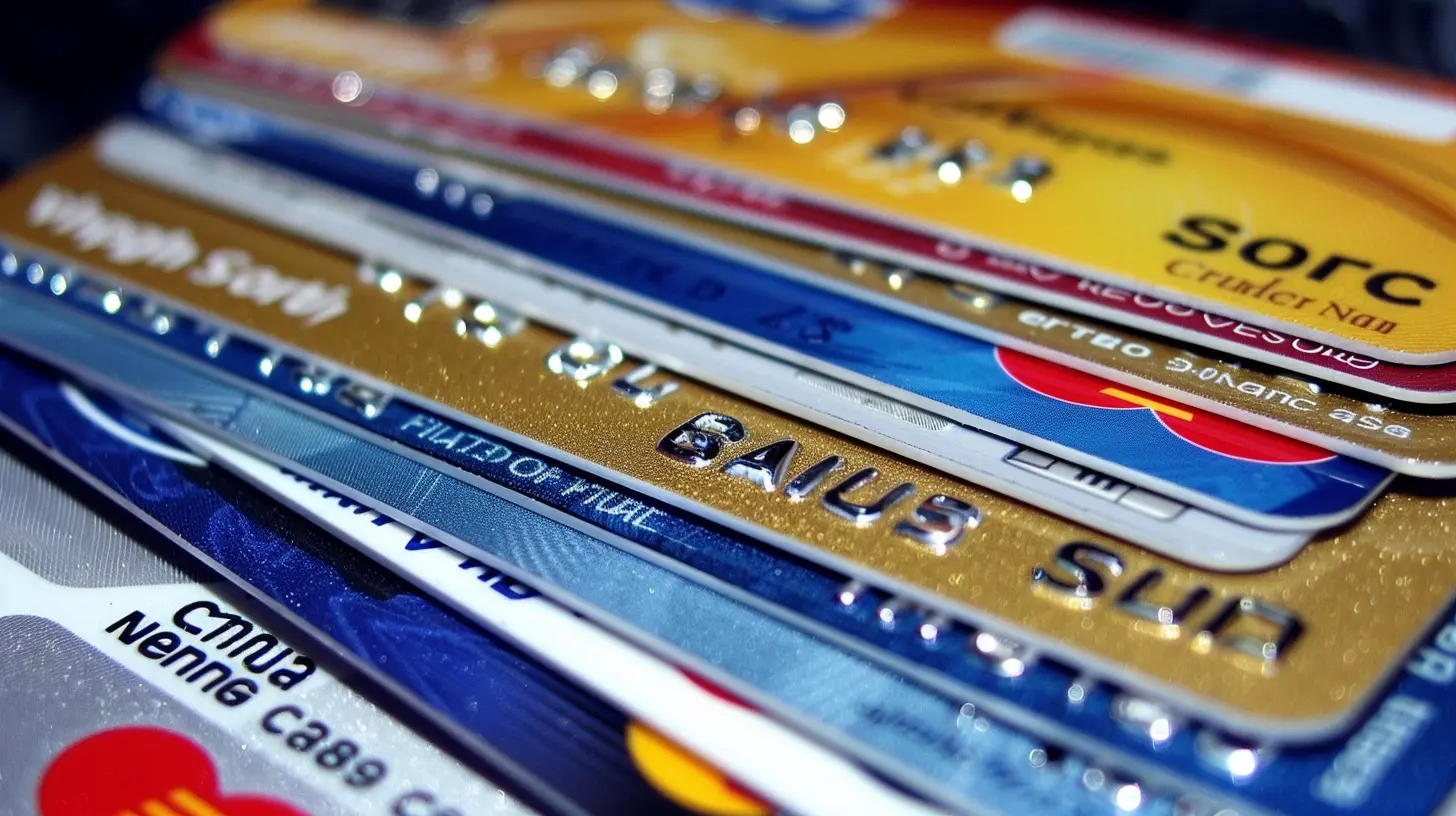The Impact of Credit Utilization on Your Credit Score
6 October 2025
Ever feel like your credit score is a mystery wrapped in an enigma, sprinkled with confusion? You're not alone. One of the most misunderstood (yet incredibly important) factors in your credit score is something called credit utilization. It might sound like finance jargon, but once you crack the code, it’s actually pretty straightforward—and knowing how it works can be a total game-changer for your financial health.
In this post, we're diving deep into what credit utilization really means, how it affects your credit score, and—most importantly—how you can use it to your advantage. So grab a coffee, kick back, and let’s break it down together.
What Exactly is Credit Utilization?
Alright, let's start simple.Credit utilization is the ratio of your credit card balances to your credit limits. In plain English? It’s how much of your available credit you’re actually using.
For example, if you have a credit card with a $10,000 limit and you’ve charged $3,000 to it, your credit utilization is 30%. Easy math, big impact.
Now here’s the kicker: credit utilization makes up nearly 30% of your credit score. That’s just behind your payment history. So yeah, it matters—a lot.
Why Does Credit Utilization Matter So Much?
Think of credit utilization like your financial breathing room. Lenders see high credit usage as a red flag. It doesn't matter if you pay off your balance every month or not—if you're constantly maxing out your cards, you look risky.Let me put it this way: if your financial habits are a report card, high credit utilization is like turning in your homework late every week. Even if you eventually get it done, your teacher (aka the credit bureaus) still takes note.
The Logic Behind It
Lenders want to know that you’re responsible and not living on borrowed time—or borrowed money. Using a smaller portion of your available credit signals that you know how to manage debt, which makes you appear more creditworthy.Think about it: if someone handed you a $20,000 credit line and you used $19,000 of it in one go, wouldn’t that raise some eyebrows?
Ideal Credit Utilization Ratio: What's the Magic Number?
While there’s no one-size-fits-all answer, most credit experts agree: keep your credit utilization under 30% across all your credit cards. But if you want to shoot for an excellent score? Aim for under 10%.Here’s a quick breakdown:
- 0-9%: Excellent (You're a rockstar!)
- 10-29%: Good (You're doing just fine)
- 30-49%: Fair (Time to be cautious)
- 50-75%: Poor (You're on thin ice)
- 75%+: Very poor (Yikes. Lenders are likely scared off.)
The lower your utilization, the better. But don’t go overboard. Using zero credit can also be problematic because it doesn't give creditors any data to judge your credit habits.
How is Credit Utilization Calculated?
Here’s where it gets a little technical—but stick with me.There are actually two types of credit utilization that matter:
1. Individual Credit Utilization – The usage percentage of each separate credit card.
2. Aggregate Credit Utilization – The total utilization across all accounts.
Let’s say you have two credit cards:
- Card A: $5,000 limit, $1,500 balance (30% utilization)
- Card B: $10,000 limit, $0 balance (0% utilization)
Your total combined limit is $15,000, and your total balance is $1,500. That means your aggregate utilization is 10%.
BUT—and this is a big but—some scoring models also take individual utilization into account. So even though your total usage is low, having one card at 30% can still ding your score.
Here’s What Impacts Your Credit Utilization
Understanding credit utilization is more than just knowing the numbers. Several factors play into it:1. Your Credit Limits
Pretty obvious, right? The higher your limit, the more room you have before your utilization gets too high.That’s why asking for a credit limit increase (without increasing your spending) can immediately improve your utilization ratio.
2. Your Balances
Everything you owe on your credit cards goes into this calculation—even if you pay it off in full every month. Timing is everything.Most issuers report your balance at the end of your statement cycle, not when you pay. So if you want to look squeaky clean, try paying your card off a few days before the billing cycle ends.
3. Opening or Closing Credit Cards
When you open a new card, your total credit limit increases, which (assuming your balance stays the same) lowers your utilization.On the flip side, closing a card can hurt your utilization ratio because your available credit drops, even if your debt doesn’t.
How to Lower Your Credit Utilization Ratio
If your credit utilization is higher than you’d like, don’t stress. You’ve got options. Let’s go through some strategic (and realistic) ways to bring it down.1. Pay Down Your Balances
This is the most obvious—and most effective—strategy. The less debt you carry, the lower your utilization.If you carry balances on multiple cards, consider using the “avalanche method” (pay off the highest interest debts first) or the “snowball method” (pay off the smallest balances first for quick wins).
2. Increase Your Credit Limits
Call your card issuers and ask for a credit limit increase. If you’ve been a good customer, they might be happy to bump it up.Pro tip: Avoid doing this too often, since each request might involve a hard inquiry on your credit report, which can temporarily lower your score.
3. Open a New Credit Card
Adding a new credit card increases your total available credit, which helps your utilization ratio—just make sure you don’t rack up more debt.Also, be mindful of how opening new cards affects your average account age, which is another credit score factor.
4. Make Multiple Payments Each Month
Why wait for your bill to arrive? Making payments throughout the month can keep your reported balances low and improve your utilization.Think of it like having a leaky faucet—you don’t wait for the sink to overflow before fixing it, right?
5. Set Balance Alerts
Most credit card apps let you set alerts when your balance hits a certain limit. This way, you can stay on top of your spending before it starts hurting your score.What NOT to Do When Managing Credit Utilization
We’ve talked about what to do, but let’s take a second for what not to do:- Don’t max out your cards, even if you can pay them off right away.
- Don’t close old cards just because you don’t use them.
- Don’t use one card for everything, especially if it puts your individual utilization over 30%.
- Don’t ignore your statement dates—timing is everything when it comes to what gets reported.
Final Thoughts: Keep It Low, Keep It Consistent
Here’s the bottom line—credit utilization is one of the fastest ways to either improve or destroy your credit score. It represents how much self-control you have over your plastic, and the credit bureaus are watching.Keep your balances low, monitor your limits, and play it smart. Remember, credit isn’t about how much you can spend—it’s about how wisely you manage what you have.
So, the next time you whip out your card, ask yourself: Is this purchase worth the hit to my credit health?
Quick Recap
Let’s wrap this up with some key takeaways:- Your credit utilization is the percentage of credit you’re using compared to what’s available.
- It makes up about 30% of your FICO score—second only to payment history.
- Try to keep your utilization under 30%, ideally under 10% for a top-tier score.
- Pay down balances, increase limits, or open new accounts to improve your ratio.
- Timing your payments and understanding statement cycles can give you an edge.
Managing your credit utilization isn’t rocket science, but it does require a little strategy. The good news? You’re now armed with the knowledge to make it work for you—not against you.
all images in this post were generated using AI tools
Category:
Credit CardsAuthor:

Harlan Wallace
Discussion
rate this article
1 comments
Colton McDowell
This article provides insightful information on credit utilization and its importance. I've learned how managing credit wisely can significantly affect my score. Thank you for breaking down the topic so clearly—it's a reminder to be mindful of my credit habits moving forward.
October 23, 2025 at 11:30 AM

Harlan Wallace
Thank you for your kind words! I'm glad you found the article helpful and that it reinforced the importance of managing credit wisely.


